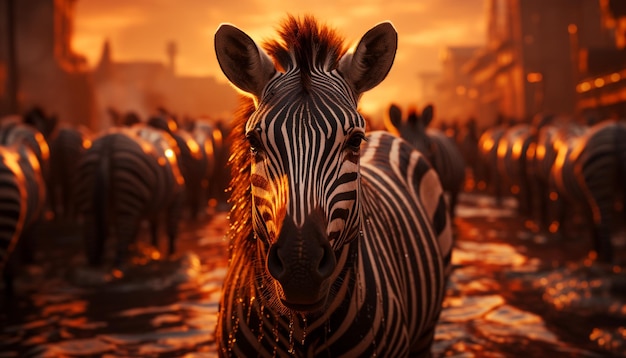Discovering Fascinating Facts about Zebras

Zebras are not actually horses – they belong to a different genus called Equus.
The stripes on zebras are unique to each individual, just like our fingerprints.
A group of zebras is called a dazzle.
Zebras can run at speeds of up to 40 miles per hour.
Despite their black and white appearance, zebras have a layer of black skin underneath their stripes.
The stripes on zebras help to confuse predators, making it difficult for them to single out an individual zebra.
Zebras have excellent eyesight and can see in color.
Zebras communicate through various vocalizations such as barks, whinnies, and snorts.
Zebras have excellent hearing and can rotate their ears in different directions.
When zebras sleep in groups, they take turns standing guard to watch out for predators.
Zebras have a strong sense of smell and can recognize their family members by scent.
Newborn zebras can stand and walk within just a few minutes of being born.
Zebras have a special joint in their legs that allows them to sleep standing up, making it easier to escape from danger quickly.
Zebras can go without water for up to five days.
Unlike horses, zebras have never been successfully domesticated.
Zebras can live up to 25 years in the wild.
Zebras have a herbivorous diet, mostly consisting of grass and foliage.
Zebras are highly social animals and form strong bonds within their groups.
Discovering Fascinating Facts about Zebras part 2
Zebras groom each other to help remove dirt and parasites from their coats.
Zebras have a strong kick and can defend themselves against predators like lions.
A zebra’s mane stands upright, unlike that of a horse.
Zebras often roll in dust or mud to create a protective layer against insects and the sun.
Zebras have a unique digestive system that allows them to extract more nutrients from their food.
In some cultures, zebras are considered symbols of balance and individuality.
Zebras have a complex social hierarchy within their groups.
In ancient Rome, zebras were used for various purposes such as circuses and chariot races.
Zebras can recognize each other by the size, shape, and pattern of their stripes.
The stripes on zebras may serve as a natural sunscreen, protecting them from the sun’s harmful rays.
Zebras often migrate in search of food and water sources.
In captivity, zebras can be seen in zoos and wildlife reserves around the world.
Zebras have a unique digestive system that allows them to ferment food in their large intestines.
The Okavango Delta in Botswana is one of the few remaining places where large populations of zebras can be found.
Zebras use their front teeth to bite grass, while their back teeth help grind it down.
Zebras have a high endurance and can travel long distances in search of food and water.
Zebras have been depicted in various forms of art throughout history, symbolizing freedom and untamed spirit.
The zebra is the national animal of Botswana.
Zebras have adapted to survive in various environments, from grasslands to mountainous regions.
Zebras can communicate with each other by using a combination of vocalizations and body language.
Zebras have a strong maternal instinct and show great care towards their young.
Lions are the main predators of zebras in the wild.
Zebras have a unique behavior called flehmen response, where they curl their upper lip to enhance their sense of smell.
Zebras can drink up to 12 gallons of water in a single visit to a watering hole.
Zebras can distinguish between different shades of green, which helps them locate the most nutritious grass.
The stripes on zebras extend to their hooves, which may act as a form of camouflage when standing in tall grass.
Zebras have a fascinating social structure, with dominant males protecting their territories and leading the group.

